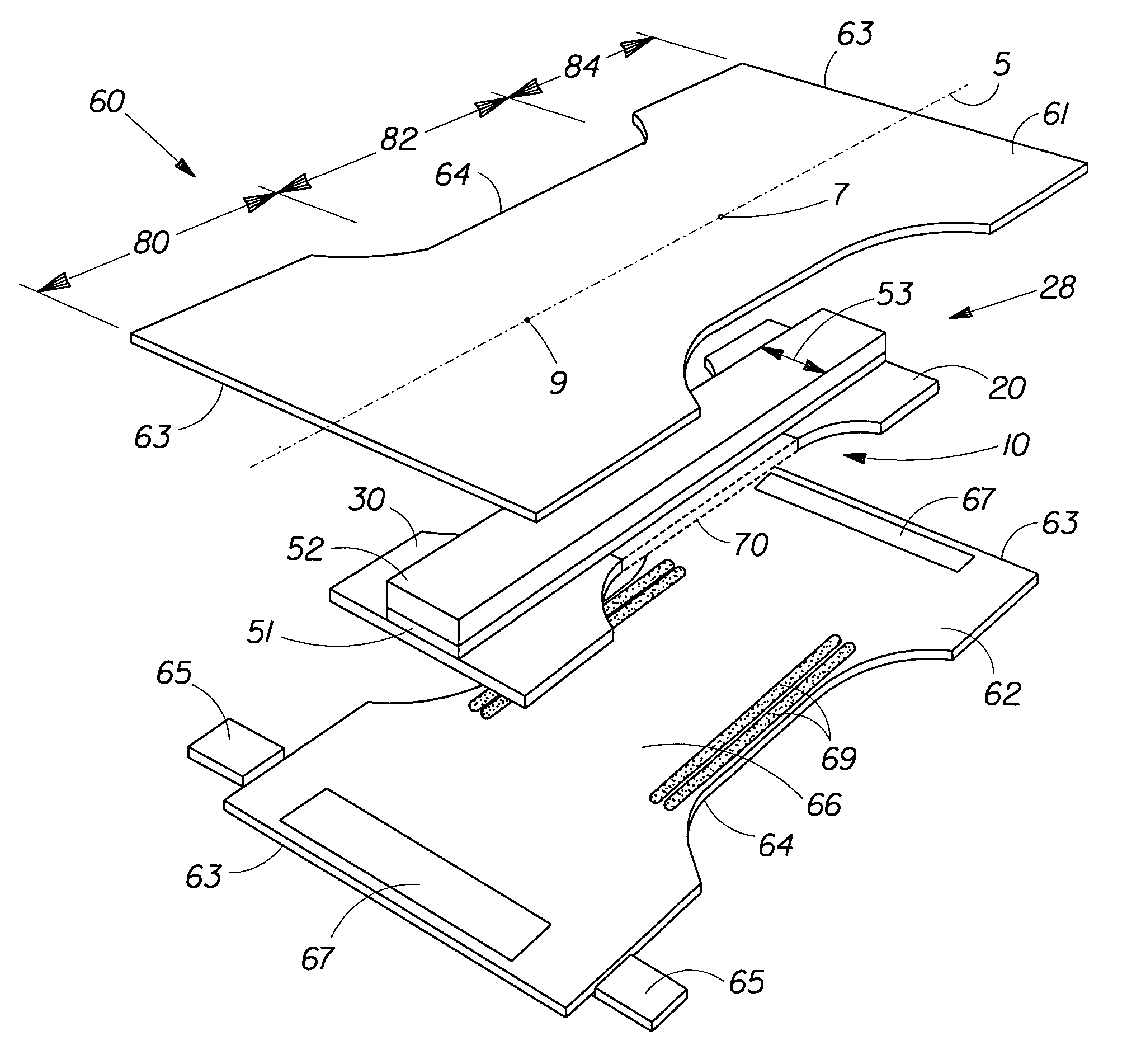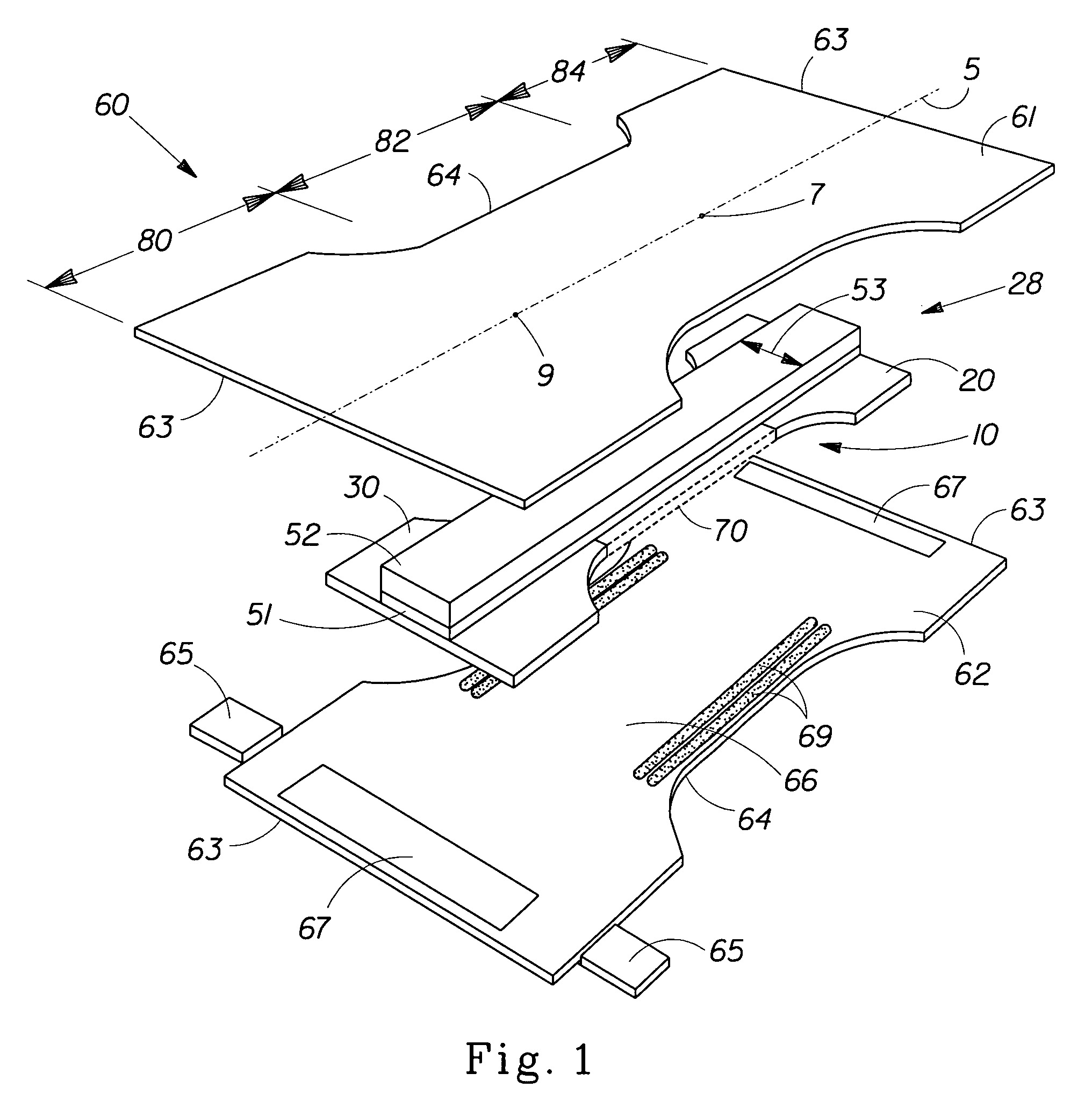Disposable absorbent articles comprising non-biopersistent inorganic vitreous microfibers
a technology of inorganic vitreous microfibers and absorbent articles, which is applied in the field of disposable absorbent articles comprising non-biopersistent inorganic vitreous microfibers, can solve the problems of affecting the comfort of wearers
- Summary
- Abstract
- Description
- Claims
- Application Information
AI Technical Summary
Benefits of technology
Problems solved by technology
Method used
Image
Examples
example 1
[0175]A composition comprising 62 parts SiO2, 3 parts Al2O3, 7 parts CaO, 4 parts MgO, 17 parts Na2O+K2O, and 7 parts B2O3, is heated until molten, and formed into vitreous microfibers using the centrifugal or “rotary” process described above. A flame attenuation process is used to form microfibers comprising the same chemical composition. Portions of the fibers from each process are blended to provide a mixture having an average effective fiber diameter of 1.8 μm, using a density of 2.6 g / cc for the bulk composition. The fibers are converted into a web without binder via a wet-laying process as described above. The basis weight of the web is 120 g / m2, and the thickness is 1.13 mm. The density is calculated to be 0.106 g / cc. The fibers are determined to be non-biopersistent. The web comprising non-biopersistent inorganic vitreous fibers has a tensile strength of 0.44 kN / m, a vertical wicking height of 64 cm, and a permeability of 21 Darcys. The material wicks fluid to 5 cm within 30...
example 2
[0176]A composition comprising 62 parts SiO2, 3 parts Al2O3, 7 parts CaO, 4 parts MgO, 17 parts Na2O+K2O, and 7 parts B2O3, is heated until molten, and formed into vitreous microfibers using the centrifugal or “rotary” process described above. The average effective fiber diameter is determined to be 1.8 μm, using a density of 2.6 g / cc for the bulk composition. The fibers are collected and converted into a web without binder via an air-laying process as described above. The basis weight of the web is 120 g / m2, and the thickness is 2.5 mm measured under a pressure of 600 Pa. The density is calculated to be 0.048 g / cc. The fibers are determined to be non-biopersistent. The web comprising non-biopersistent inorganic vitreous fibers wicks a 0.9% saline solution to a height of 5 cm within 1 minute and to a height of 10 cm within 5 minutes. The material has a permeability of 20 Darcys. A piece of the web is used as a component of a fixed distribution member of a diaper with a removable cor...
PUM
| Property | Measurement | Unit |
|---|---|---|
| Length | aaaaa | aaaaa |
| Length | aaaaa | aaaaa |
| Length | aaaaa | aaaaa |
Abstract
Description
Claims
Application Information
 Login to View More
Login to View More - R&D
- Intellectual Property
- Life Sciences
- Materials
- Tech Scout
- Unparalleled Data Quality
- Higher Quality Content
- 60% Fewer Hallucinations
Browse by: Latest US Patents, China's latest patents, Technical Efficacy Thesaurus, Application Domain, Technology Topic, Popular Technical Reports.
© 2025 PatSnap. All rights reserved.Legal|Privacy policy|Modern Slavery Act Transparency Statement|Sitemap|About US| Contact US: help@patsnap.com



